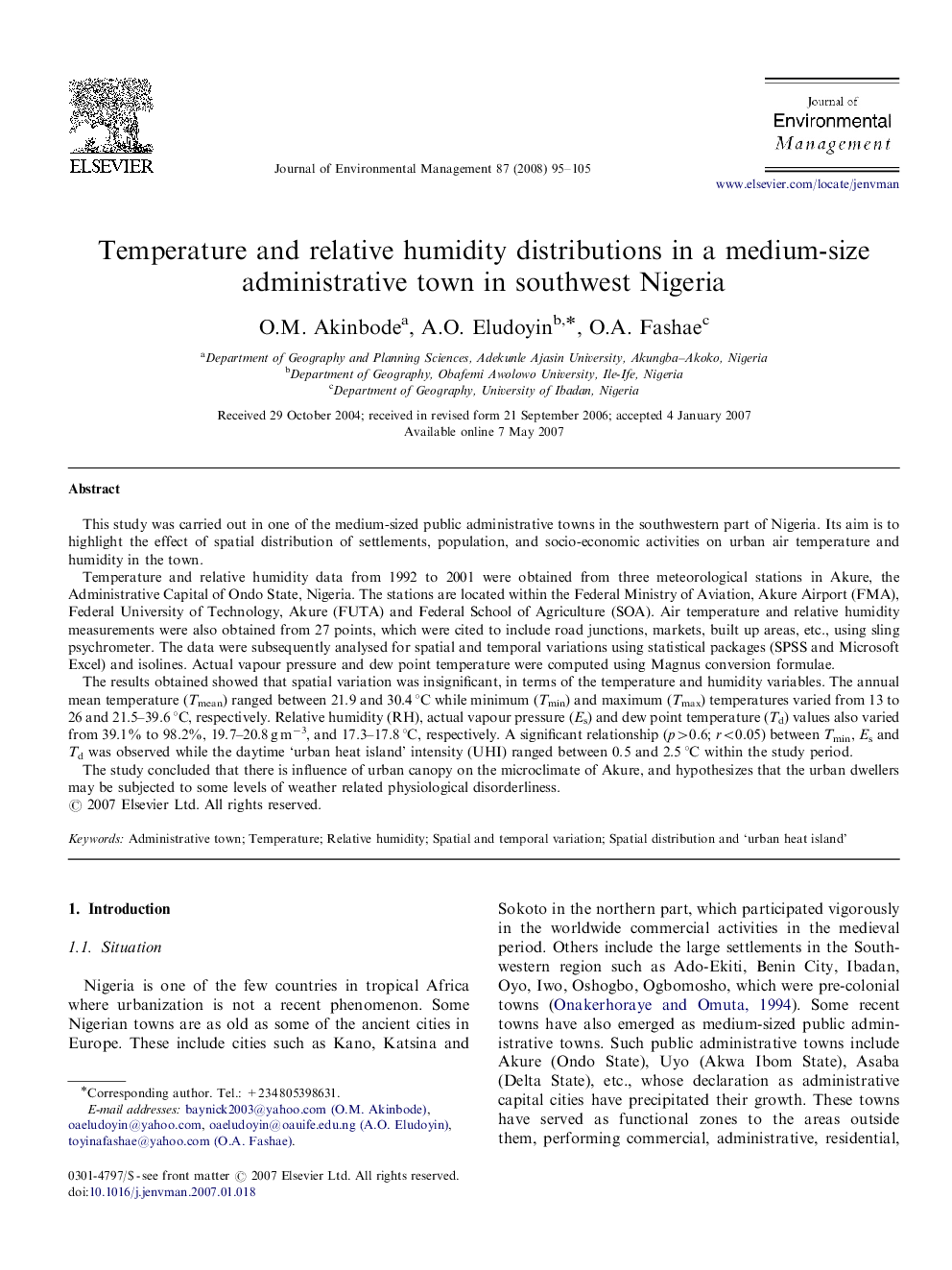| کد مقاله | کد نشریه | سال انتشار | مقاله انگلیسی | نسخه تمام متن |
|---|---|---|---|---|
| 1058147 | 947105 | 2008 | 11 صفحه PDF | دانلود رایگان |

This study was carried out in one of the medium-sized public administrative towns in the southwestern part of Nigeria. Its aim is to highlight the effect of spatial distribution of settlements, population, and socio-economic activities on urban air temperature and humidity in the town.Temperature and relative humidity data from 1992 to 2001 were obtained from three meteorological stations in Akure, the Administrative Capital of Ondo State, Nigeria. The stations are located within the Federal Ministry of Aviation, Akure Airport (FMA), Federal University of Technology, Akure (FUTA) and Federal School of Agriculture (SOA). Air temperature and relative humidity measurements were also obtained from 27 points, which were cited to include road junctions, markets, built up areas, etc., using sling psychrometer. The data were subsequently analysed for spatial and temporal variations using statistical packages (SPSS and Microsoft Excel) and isolines. Actual vapour pressure and dew point temperature were computed using Magnus conversion formulae.The results obtained showed that spatial variation was insignificant, in terms of the temperature and humidity variables. The annual mean temperature (Tmean) ranged between 21.9 and 30.4 °C while minimum (Tmin) and maximum (Tmax) temperatures varied from 13 to 26 and 21.5–39.6 °C, respectively. Relative humidity (RH), actual vapour pressure (Es) and dew point temperature (Td) values also varied from 39.1% to 98.2%, 19.7–20.8 g m−3, and 17.3–17.8 °C, respectively. A significant relationship (p>0.6; r<0.05) between Tmin, Es and Td was observed while the daytime ‘urban heat island’ intensity (UHI) ranged between 0.5 and 2.5 °C within the study period.The study concluded that there is influence of urban canopy on the microclimate of Akure, and hypothesizes that the urban dwellers may be subjected to some levels of weather related physiological disorderliness.
Journal: Journal of Environmental Management - Volume 87, Issue 1, April 2008, Pages 95–105